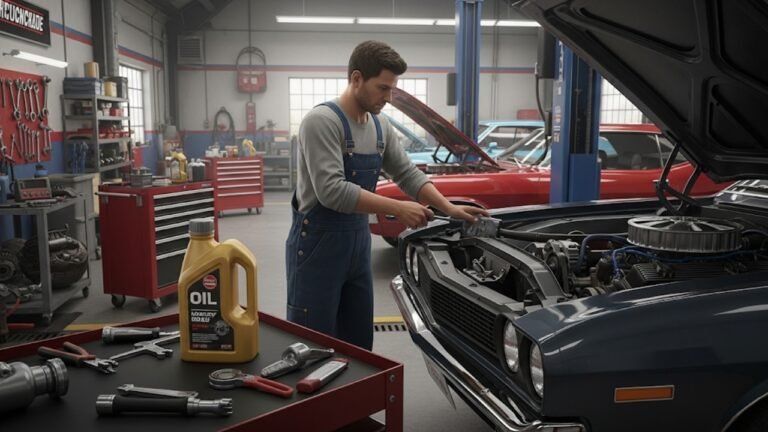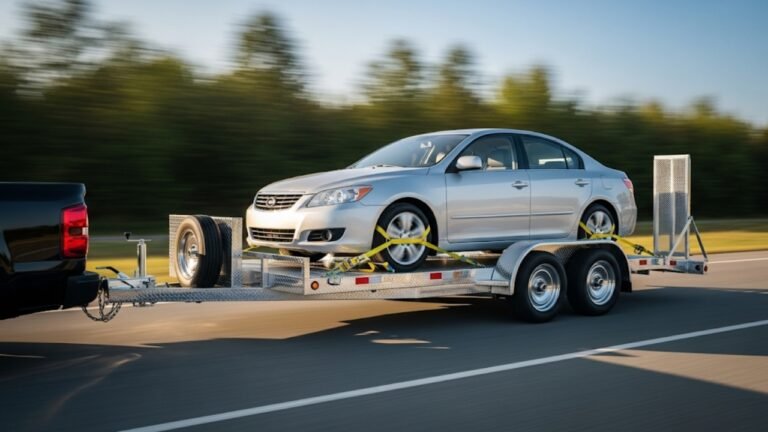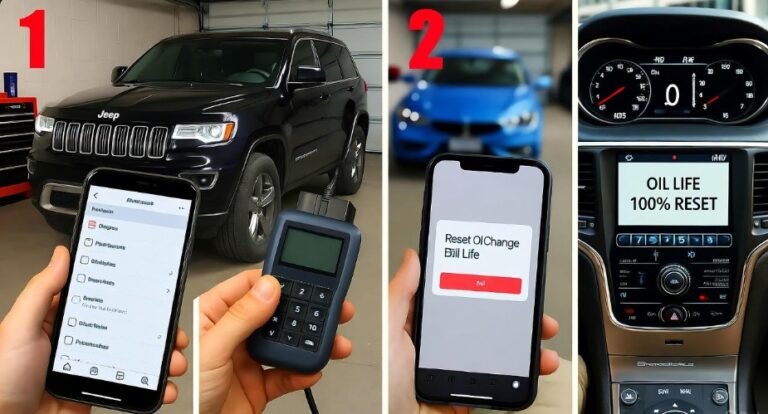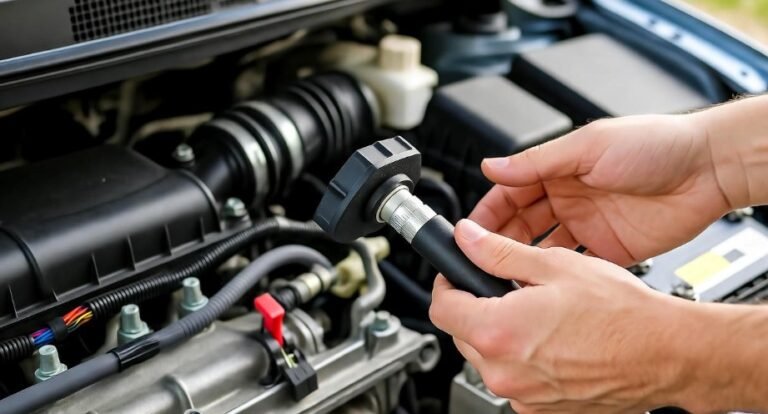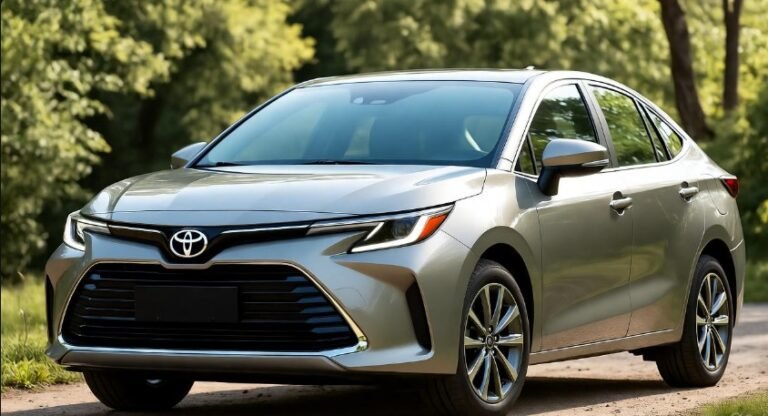Why Does My Car Overheat When I Stop: Understanding the Causes and Solutions
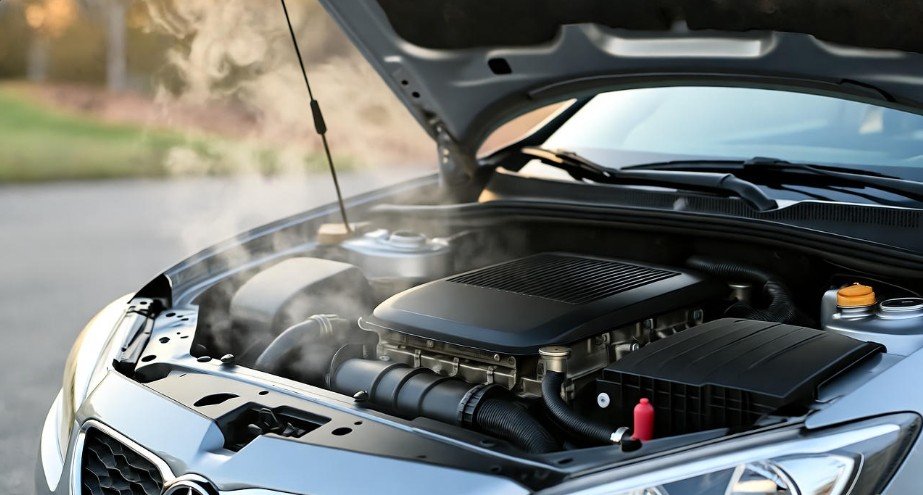
Have you ever been driving and noticed your car overheating when you stop? Maybe you’re sitting at a traffic light or waiting in a long line, and suddenly, the temperature gauge creeps into the red zone, or steam starts rising from under the hood. It’s not just alarming—it’s a serious warning sign that your vehicle’s cooling system might be struggling. Ignoring it can lead to engine damage, costly repairs, and frustrating roadside emergencies.
In this guide, we’ll explore why your car overheats when stopping, what contributes to this problem, and practical tips to prevent it. Think of this as a friendly chat over coffee about your car’s health. By understanding the root causes, you can take action before a small issue turns into a big one.
Understanding Car Overheating: The Basics
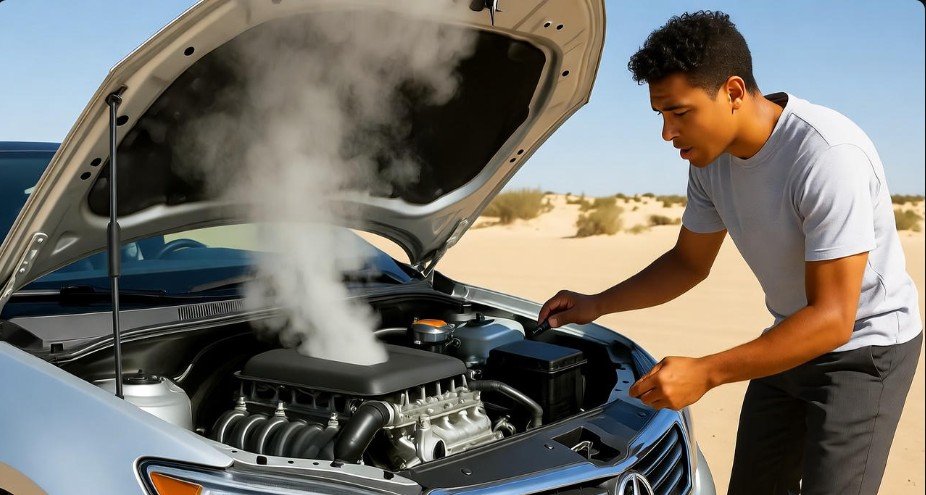
Car engines are designed to operate within a specific temperature range, usually between 195°F and 220°F. When your engine exceeds this range, it’s considered overheated. Engine overheating occurs when the heat generated by fuel combustion exceeds the cooling system’s ability to dissipate it.
When driving, air flows naturally through the radiator, helping cool the engine coolant. However, when you stop, that airflow disappears. If the cooling system isn’t functioning properly, your engine temperature can rise rapidly. The resulting stress on engine components can cause long-term damage, from warped cylinder heads to blown head gaskets.
Understanding these basics helps you realize that overheating isn’t just inconvenient—it’s a signal that something is off in your vehicle’s cooling system.
Common Causes of Car Overheating When Stopped
Several factors can make your car overheat when idle. Let’s break them down:
1. Insufficient Coolant Levels
Coolant, or antifreeze, circulates through your engine and radiator, absorbing heat and preventing your engine from overheating. Low coolant levels reduce the system’s ability to maintain safe temperatures. This is especially noticeable when the car stops because there’s no airflow to assist in cooling.
2. Malfunctioning Radiator
Your radiator acts like a heat exchanger, releasing engine heat into the air. Over time, it can become clogged with debris or suffer internal damage. A radiator that isn’t working properly can’t dissipate heat efficiently, causing your engine temperature to spike when idle.
3. Faulty Thermostat
The thermostat regulates coolant flow. If it’s stuck closed, coolant won’t circulate correctly, trapping heat inside the engine. A malfunctioning thermostat often results in rapid overheating, particularly when your vehicle is stopped.
4. Blocked or Leaking Hoses
Hoses carry coolant throughout the engine. If they are cracked, leaking, or blocked, the coolant flow is disrupted. Without proper circulation, engine temperature rises quickly, especially at idle.
Pro tip: Keeping an eye on your coolant level, checking for leaks, and replacing old hoses can prevent many overheating scenarios.
How Stopping Impacts Engine Temperature
You might wonder: “Why does my car only overheat when I stop?” Here’s the explanation.
When your car is moving, air naturally flows over the radiator, aiding in heat dissipation. The water pump keeps coolant circulating, ensuring that heat is removed continuously. When you stop:
-
Airflow from driving stops.
-
The radiator relies solely on the radiator fan, which may not be powerful enough or functioning correctly.
-
Coolant circulation slows down if there’s a problem with the water pump or thermostat.
Table: Cooling System Components & Their Role
| Component | Function | Effect When Malfunctioning |
|---|---|---|
| Coolant | Absorbs engine heat | Low levels → rapid overheating |
| Radiator | Dissipates heat | Clogged/damaged → inefficient cooling |
| Thermostat | Regulates coolant flow | Stuck closed → heat trapped |
| Radiator Fan | Provides airflow at low speeds | Malfunction → engine overheats at idle |
| Water Pump | Circulates coolant throughout the engine | Failure → overheating and engine damage |
As you can see, stopping puts extra pressure on your car’s cooling system. Any weakness or malfunction becomes much more noticeable, and the engine heats up faster than when driving.
Factors That Contribute to Overheating at a Stop
Several issues can amplify the problem of overheating when stopped:
-
Inadequate Coolant Levels – Not topping up your coolant regularly reduces the system’s capacity to absorb heat. Even a small drop can make a big difference at idle.
-
Malfunctioning Radiator Fan – Radiator fans are critical when airflow is low. If the fan doesn’t turn on, the heat has nowhere to go.
-
Faulty Thermostat – A thermostat that doesn’t open properly prevents coolant from circulating, causing heat to build up.
-
Hot Weather Conditions – High ambient temperatures increase the engine’s heat load, making overheating at stops more likely.
-
Aging Engine Components – Older engines may have reduced cooling efficiency due to wear in hoses, pumps, and radiators.
Addressing these factors early helps prevent frequent overheating issues, saving you from engine damage and expensive repairs.
The Role of Coolant Circulation
Coolant circulation is the heart of your engine’s cooling system. The water pump pushes coolant through the engine block and cylinder head, absorbing heat before sending it to the radiator. A functioning system maintains a consistent temperature, even in traffic.
When the water pump fails or the thermostat malfunctions, the circulation stops or slows. This is why overheating occurs most frequently when stopped—the engine continues generating heat, but the cooling system isn’t moving it away efficiently.
Quick Checklist for Coolant Health:
-
Check the coolant reservoir weekly.
-
Look for discoloration (rusty or dirty coolant).
-
Ensure hoses are flexible and leak-free.
-
Replace coolant per manufacturer recommendations.
By keeping your coolant system in top shape, you drastically reduce the chances of your engine overheating when stopped.
The Dangers of Ignoring Overheating When Stopped
Overheating might seem harmless at first, especially if it only happens when you’re stopped, but ignoring it can have serious consequences. Engines operate under precise temperature conditions, and excessive heat can damage key components.
Consequences of ignoring overheating include:
-
Warped Cylinder Heads: Heat can cause metal parts to expand and warp, leading to costly repairs.
-
Blown Head Gasket: A common issue from prolonged overheating, leading to coolant leaks and engine misfires.
-
Engine Seizure: Extreme heat can make moving parts expand beyond tolerance, causing the engine to seize completely.
-
Premature Component Wear: Belts, hoses, and other engine components degrade faster under excessive heat.
Simply put, overheating is your car’s way of waving a red flag. Treating it lightly could leave you stranded or facing repair bills that easily exceed a thousand dollars. Acting quickly when your car shows signs of overheating is crucial for safety and longevity.
Signs Your Car is Overheating at a Stop
It’s important to recognize the warning signs early. By noticing these indicators, you can prevent serious damage:
-
Rising Temperature Gauge: If the needle climbs into the red zone, your engine is running hotter than it should.
-
Steam or Smoke from the Hood: Often caused by boiling coolant; this is an immediate warning to stop.
-
Burning Smell: A pungent odor may indicate overheating coolant or oil.
-
Coolant Loss: Frequent drops in coolant levels can signal leaks or system inefficiency.
-
Unusual Engine Noise: Knocking or pinging sounds can result from heat stress on engine components.
Quick Tip: If you notice any of these signs, pull over safely, turn off the engine, and allow it to cool before inspecting or topping up coolant. Never open the radiator cap while the engine is hot—it can cause serious burns.
Troubleshooting Overheating When Stopped
Here are practical steps to identify and fix the cause of overheating at idle:
-
Check Coolant Levels: Ensure your coolant is at the recommended level. Low coolant is one of the most common causes of overheating.
-
Inspect the Cooling System: Look for leaks in hoses, the radiator, or the water pump. Damaged components disrupt heat flow.
-
Examine the Thermostat: A malfunctioning thermostat can trap heat in the engine. Replace if necessary.
-
Check the Radiator Fan: Ensure the fan turns on when the engine is hot. A broken fan often causes overheating in stop-and-go traffic.
-
Flush the Cooling System: Over time, old or contaminated coolant can lose efficiency. A flush and replacement can restore proper cooling.
If these steps don’t resolve the issue, consult a professional mechanic. Modern engines have complex cooling systems, and specialized diagnostic tools may be required.
Tips for Preventing Overheating When Stopped
Preventing overheating at idle is easier than repairing the damage afterward. Follow these maintenance strategies:
-
Regular Maintenance: Schedule routine inspections of your cooling system, including hoses, radiator, and water pump.
-
Monitor Coolant Levels and Quality: Top up when necessary and replace old coolant according to the manufacturer’s schedule.
-
Ensure Proper Radiator Fan Function: Test your fan occasionally to confirm it operates correctly at idle.
-
Check Thermostat Functionality: Replace faulty thermostats to maintain consistent coolant flow.
-
Avoid Heavy Loads in Hot Weather: Towing or heavy traffic in high temperatures increases overheating risk.
Pro Tip: Keep a spare bottle of coolant in your car. While it’s not a permanent fix, topping up during an emergency can prevent severe overheating until you reach a mechanic.
Coolant Circulation and Its Importance
The engine coolant is like the bloodstream of your car—it transports heat away from vital components. When circulation is efficient, the engine maintains optimal temperature.
Key points about coolant circulation:
-
The water pump moves coolant through the engine block and radiator.
-
The radiator dissipates the heat absorbed by coolant into the air.
-
A functioning thermostat regulates when coolant flows, keeping the engine temperature balanced.
If any of these components fail, heat accumulates quickly, especially at stops. Maintaining coolant health, inspecting pumps and hoses, and replacing the thermostat as needed keeps your car cool and running smoothly.
FAQs About Car Overheating When Stopped
1. Why does my car only overheat when idling?
Your engine relies on airflow from driving to cool the radiator. At a stop, circulation slows, and any cooling system issues become more pronounced.
2. Can a low radiator fan cause overheating at a stop?
Yes. The fan is crucial for maintaining airflow when the car isn’t moving. If it’s broken, the engine overheats quickly at idle.
3. Is it dangerous to drive a car that overheats at stops?
Yes. Overheating can damage the engine, blow head gaskets, or even seize the engine. Stop immediately if you notice warning signs.
4. How often should I check my coolant?
Check your coolant monthly and before long trips. Top up as needed and replace according to the manufacturer’s schedule.
5. Can hot weather alone cause overheating?
Hot weather increases the engine’s heat load, making existing cooling system weaknesses more noticeable, particularly at stops.
6. What should I do if my car overheats at a traffic light?
Turn off the engine safely, wait for it to cool, check coolant levels, and avoid opening the radiator cap while hot.
7. Are older cars more prone to overheating when stopped?
Yes. Aging engines may have worn hoses, radiators, or water pumps, which reduce cooling efficiency at idle.
8. Can flushing the cooling system help?
Absolutely. Flushing removes contaminants and old coolant, restoring optimal circulation and preventing overheating.
Conclusion: Keep Your Engine Cool
Experiencing overheating when your car stops is more than just an inconvenience—it’s a serious warning. From low coolant levels to a faulty thermostat or broken radiator fan, several factors can contribute to this issue. Understanding the causes and early warning signs empowers you to take quick action, preventing costly repairs and ensuring your engine’s longevity.
Key takeaways:
-
Regular maintenance is essential for a healthy cooling system.
-
Check coolant levels and quality frequently.
-
Inspect the radiator, hoses, water pump, and fan regularly.
-
Never ignore overheating—take immediate action to prevent severe engine damage.
By staying proactive, you’ll avoid the frustration of a stranded car and enjoy a reliable, long-lasting engine. Remember, your car relies on you to keep it cool—literally!

